India and the World chapter 10: Simla Agreement – playing cool.

Baskaran Krishnamurthy
Read Chapter 1 , Chapter 2 , Chapter 3 , Chapter 4, Chapter 5, Chapter 6, Chapter 7, Chapter 8, Chapter 9 if you are yet read them.
“It was a comprehensive blueprint for good neighbourly relations between India and Pakistan. Under the Simla Agreement both countries undertook to abjure conflict and confrontation which had marred relations in the past and to work towards the establishment of durable peace, friendship and cooperation”.
“The Simla Agreement contains a set of guiding principles, mutually agreed to by India and Pakistan, which both sides would adhere to while managing relations with each other”.
“India has fully observed the Simla Agreement in the conduct of its relations with Pakistan.”
(‘Public Diplomacy’ – Ministry of External Affairs, Government of India)
The Agreement signed on the 2nd July 1972 between Zulfikar Ali Bhutto and Indira Gandhi was surely a positive development. It had 6 points which again had many sub clauses. A close study of the Agreement reveals many important points. We can safely reach these conclusions:
It is an agreement between two Governments – which means that it is NOT between the peoples of these two. It is understandable. We cannot expect the people to be signatories. But strict and proper implementation of an Agreement must have the approval of the people. This is where the problem originates.
As a true democratic republic, the concept of ‘perpetuity in governance’ is scrupulously followed by successive governments in India. The leaders of India, from whichever party they come from, with whatever political ideology, do respect and stand for the commitments made by the previous incumbents. There has not been a single instance during the past 71 years of free India that the rulers disregarded any Pact signed by the earlier incumbent – whether it is political or economic or cultural.
Nobody can ever be so sure of the Pakistan Government. Democratic principles are given a go by and the rulers do not separate the decision of the national government from their likes and dislikes. Violations are too common and it was only to be expected because Pakistan polity is still not firmly rooted in Democracy.
In this situation, any Agreement is bound to be practiced more in its breach. For a meaningful healthy progress in the bilateral relations, Pakistan has to establish itself as a strong democratic republic. This seems to be quite not possible in near future with a puppet being placed as the Prime Minister through a general election rigged by the army.
Simla agreement honestly admits that ‘the conflict and confrontation have hitherto marred the relations’ and resolves to ‘work for the promotion of a friendly and harmonious relationship and the establishment of durable peace in the subcontinent’. This was the stated objective of both the governments. To achieve this goal, the Agreement lists out certain guidelines too.
Both the countries resolved to “settle the differences by peaceful means through bilateral negotiations or by any other peaceful means mutually agreed upon between them’’. This is perhaps the most confusing part in the Agreement. Apart from bilateral negotiations, what ‘other peaceful means mutually agreed upon’ could be there? Who did allow this clearly unclear suffix to be in the Agreement that was otherwise very well conceived?
The Agreement says – “pending the final settlement of any of the problems between the two countries, neither side shall unilaterally alter the situation, both shall prevent the organization, assistance nor encouragement of any acts detrimental to the maintenance of peaceful and harmonious relations.”
This is perhaps the ‘Soul’, the spirit, the main purpose and the underlying principle of the Agreement. This is where Pakistani governments have failed miserably. ‘To prevent any act detrimental to peace and harmony’ is a binding clause on the both governments which is blatantly violated by Pakistan. This is where the relations continue to be strained. As the Agreement is between the governments, the onus is clearly on the respective Governments and the Army or any other ‘agency’ can never be blamed for the detrimental acts.
The government concerned must take all possible measures to curb, curtail and crush anything that is likely to disturb the relations. But, most of the times, the Pakistan government itself perpetrates the trouble. When the very spirit of the Agreement is thrown to winds, normalization of relations becomes too hard to restore. Is there anyone willing to listen?
The next part reinforces the same principle in clearer terms and identifies the ‘problem area’ too – “the pre-requisite for reconciliation is a commitment to respect for each other’s territorial integrity and sovereignty and non-interference in each other’s internal affairs, on the basis of equality and mutual benefit.”
Yes. It is categorical. For reconciliation, commitment to respect territorial integrity is a pre-requisite. Non-interference in other’s internal affairs is a pre-condition too. Hence, it is very much within the scope of the Agreement if the Government of India refuses to engage in a dialogue when the infiltration, insurgency and cross border terrorism remain unchecked; when Pakistan keeps sponsoring acts of militancy in Kashmir.
The Agreement expresses hope that “the basic issues and causes of conflict which have bedeviled the relations for the last 25 years shall be resolved by peaceful means.” It was not the hope of the Heads of the governments but of the peoples of both the countries. If it was 25 years in 1972, it is now 70+ years and the hopes are yet to become reality. Rather, there have been a number of attempts to shatter the hopes and eliminate any chance of a long lasting peace.
‘The principles and purposes of the Charter of United nations shall govern the relations’. “In accordance with the Charter of the United nations, they will refrain from the threat or use of force against the territorial integrity or political independence of each other.” This again calls for closer scrutiny. Would it not be enough to say ‘they will refrain from threat or use of force’? Was there really a need or a purpose to bring in the Charter of United Nations at all? Frankly, the reference to the U.N. could have been avoided since it does give rise to the surmise that the mediatory role of the U.N. can be demanded! Who did insist for this phrase? Was it deliberated upon in all its seriousness before it was signed?
The next point in the Agreement does need a special mention. “Both governments will take all steps within their power to prevent hostile propaganda directed against each other.” The ‘hate campaign’ till date goes unabated in both countries. It is basic, common sense that hatred and harmony can never go hand in hand. But nobody is serious enough to halt the smear campaign against each other.
From political discourses to teachings in religious schools and other Institutions of learning, enmity is ignited; hatred is sown; ill-will is nurtured and falsehood is spread all over. Let us not hide or run away from the truth – it is happening on both sides. The heat of suspicion is not allowed to evaporate. The mood of disbelief is not permitted to fade. The ‘game’ goes on.
The Agreement lists out areas of cooperation ‘in order to restore and normalize relations’. This in fact is the healthiest part of the Agreement. It says – “Steps shall be taken to resume communications, to promote travel facilities for the nationals of the other country; trade and co-operation in economic and other agreed fields will be resumed; exchange in the fields of science and culture will be promoted.”
Cultural interaction could have been given maximum importance. Lahore had so much to offer as ‘Bombay’ ‘Madras’ or ‘Calcutta’ to the peoples of both the countries. But almost always, Islamabad and Delhi occupied the centre stage and they could provide very little in terms of the ‘interest’ of the common man.
The Agreement further said that “to initiate the process of the establishment of durable peace, both the Governments agree that Indian and Pakistani forces shall be withdrawn to their side of international border; in Jammu & Kashmir, the Line of Control resulting from the ceasefire of Dec 17, 1971 shall be respected by both sides without prejudice to the recognized position of either side. Neither side shall seek to alter it unilaterally, irrespective of mutual differences and legal interpretations.”
The concluding part of the Agreement left a sensitive issue to the future meetings of the Heads of the Governments and the representatives of the two sides at a mutually convenient time. It was about – “the modalities and arrangements for the establishment of durable peace and normalization of relations, including the questions of repatriation of prisoners of war and civilian internees”.
And…, at the end of the War of 1971, India had as many as 93,000 prisoners of war!
Author – Baskaran Krishnamurthy, Writer, Columnist & Income Tax officer











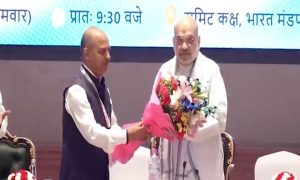

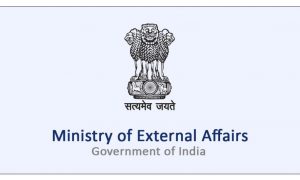

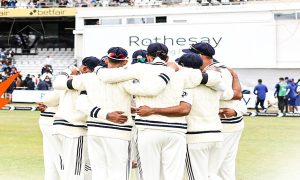

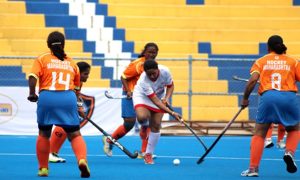







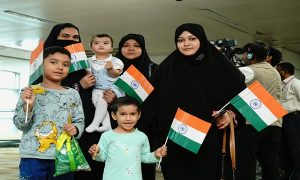

 WhatsApp us
WhatsApp us